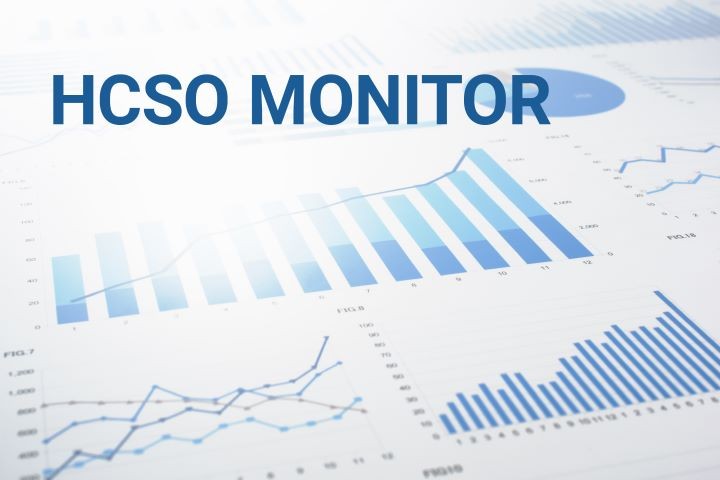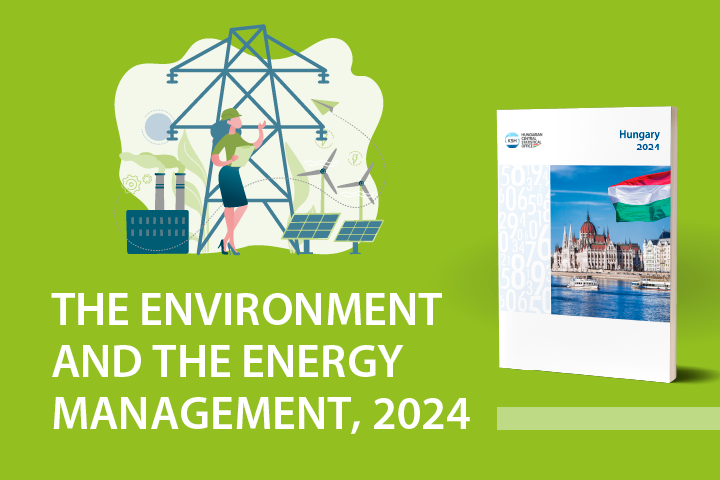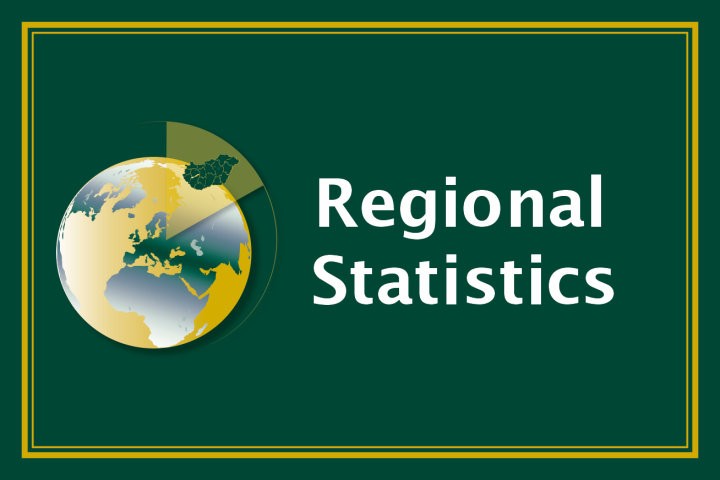Key figures
Inflation
Indicator description
Average change in the prices of goods and services purchased by households for own use, compared to the same period of the previous year. The consumer price index less 100 equals the inflation rate.
Source:
Summary tables (STADAT)
Latest data: –
GDP
Indicator description
Gross domestic product is the sum of gross value added produced by industries or sectors, valued at basic prices, and of the balance of taxes and subsidies on products, which cannot be divided by industry or sector, less financial intermediation services not divided by industry or sector. GDP volume change compared to the same period of the previous year is presented based on unadjusted data.
Source:
Summary tables (STADAT)
Latest data: –
Adjusted population
Indicator description
The full-scope censuses conducted every ten years show a comprehensive picture of the number and composition of the population. For determining the annual population number in the period between two censuses, the starting point is the population number of the last census (currently the census with the reference date of 1 October 2022), and from this, the population was estimated by using natural increase or decrease data available from the statistics of vital events until 2000. From 2001 international migration is also taken into account.
Source:
Summary tables (STADAT)
Latest data: –
Unemployment rate
Indicator description
The ratio of unemployed persons to the economically active population of corresponding age. The indicator can be calculated for different age groups, the default is the age group 15–74. Further selected age groups: 15–24, 25–54, 55–74.
Source:
Summary tables (STADAT)
Latest data: –
Employment rate
Indicator description
The ratio of employed persons to the population of corresponding age. The indicator can be calculated for different age groups, the default is the age group 15–64. Further selected age groups: 15–24, 25–54, 55–64 and 20–64.
Source:
Summary tables (STADAT)
Latest data: –
Industrial production
Indicator description
We measure changes of industrial production by variations of industrial production values, however the impact of price change is filtered out. We calculate the volume index of production based on comparative prices data of the industrial production value (presented at reference period price levels).
Source:
Summary tables (STADAT)
Latest data: –
Featured
HCSO Monitor
The collection of interactive figures provides up-to-date information on the latest domestic and international socio-economic trends.
The decisive part of the figures included in HCSO Monitor are downloadable in both image and data formats (PNG, SVG and CSV).
Feel free to browse the data in HCSO Monitor, updated many times a week!
Latest update: 14/08/2025
The decisive part of the figures included in HCSO Monitor are downloadable in both image and data formats (PNG, SVG and CSV).
Feel free to browse the data in HCSO Monitor, updated many times a week!
Latest update: 14/08/2025
Did you know? – Cinema
The 2024 movie attendance reached 10.7 million in Hungary.
If you liked it, check out our data visualisations at this link: www.ksh.hu/datavisualisations
18/12/2024
If you liked it, check out our data visualisations at this link: www.ksh.hu/datavisualisations
18/12/2024
Snapshots, 2024 – Enterprises
The number of active private entrepreneurs and business partnerships in 2024 (close to 941 thousand) was, based on preliminary data, 2.3% higher year-on-year. Both the number of private entrepreneurs and business partnerships grew. Foreign controlled enterprises in Hungary had a 41% share in gross value added in 2023, which did not change in merit, from sales revenue and employment point of view a slight increase took place compared to the previous year.
13/08/2025
13/08/2025
Hungary, 2024 – The Environment and the Energy Management
Our series of infographics, based on the most important data from the Hungarian-language publication Hungary, 2024 provides a comprehensive picture of the social and economic state of our country and the main characteristics of our environment. The last infographic in the series presents the main data of the environment and energy management. The English extract from the publication is available here: Hungary, 2024, and the full Hungarian-language version here: Magyarország, 2024.
13/08/2025
13/08/2025
Housing prices, housing price index, Q1 2025
In the first quarter of 2025, the expansion of the domestic housing market observed in 2024 did not continue, with a tenth fewer dwellings changing hands than a year earlier. The first period of the year was characterised by accelerating housing price growth. Second-hand dwellings, which account for the vast majority of sales, rose in price by 5.7%, while new dwellings gained 2.3%. The overall housing price index rose by 12.5% year-on-year, which represents a 6.9% increase in real terms.
12/08/2025
12/08/2025
Snapshots, 2024 – Digital economy
The number of fixed internet subscriptions in 2024 surpassed 3.6 million in Hungary, being 2.0% more year-on-year. The growth of the optical group determined this increase. The number of mobile phone and/or mobile internet services offering SIM cards continued to grow, being above 14.7 million by the end of 2024. Internet connection was available at 96% of domestic enterprises, two-thirds of these had its own website. The 3.5 million TV subscriptions lagged behind the previous year’s level by 1.2%.
11/08/2025
11/08/2025
Hungary, 2024 – The Living Conditions
Our series of infographics, based on the most important data from the Hungarian-language publication Hungary, 2024 provides a comprehensive picture of the social and economic state of our country and the main characteristics of our environment. The next infographic in the series presents the main data of the living conditions. The English extract from the publication is available here: Hungary, 2024, and the full Hungarian-language version here: Magyarország, 2024.
11/08/2025
11/08/2025
Snapshots, 2024 – Digital society
The use of infocommunication devices by households and individuals, in regard to the majority of main indices grew in Hungary during 2024, year-on-year. Broadband internet was available in 95% of households, 90% of the population aged 16-74 used the internet on a daily basis, 62% of them purchased online within 3 months.
05/08/2025
05/08/2025
Regional Statistics, Volume 15, Number 4, 2025
The latest issue of the scientific journal features studies on the following topics: proposal for creating regional gender equality indices in Europe; exploring regional and settlement patterns of residential energy awareness in Hungary; application of the 15-minute city concept in Madrid; impact of economic complexity on the balance of payments; patterns of Dutch lifestyle migration to Hungary; life and security of Hungarians along the Serbian–Hungarian border; competence requirements in Hungary and in European regions by enterprise size; changes in the territorial focus of Hungary’s tourism competitiveness.
04/08/2025
04/08/2025
Hungary, 2024 – The Demographic Snapshot
Our series of infographics, based on the most important data from the Hungarian-language publication Hungary, 2024 provides a comprehensive picture of the social and economic state of our country and the main characteristics of our environment. The next infographic in the series presents the main data of the demographic snapshot. The English extract from the publication is available here: Hungary, 2024, and the full Hungarian-language version here: Magyarország, 2024.
04/08/2025
04/08/2025
First releases
News, events
- The map visualisation of road traffic accidents causing personal injury has been published, 08/08/2025
- Work-life balance in the HCSO, 06/08/2025
- IT maintenance, 01/08/2025
- HCSO publishes July motor fuel price statistics, 01/08/2025
- New experimental statistics on the used car market launched, 21/07/2025









